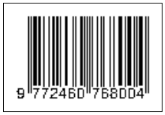Klasifikasi Curah Hujan Menggunakan Neuro-Fuzzy System Melalui Citra Radar Cuaca
Bagaskara Ilham Abadi(1*), Raden Sumiharto(2)
(1) Program Studi Elektronika dan Instrumentasi, FMIPA, UGM, Yogyakarta
(2) Departemen Ilmu Komputer dan Elektronika, FMIPA UGM, Yogyakarta
(*) Corresponding Author
Abstract
The system implementation is carried out in several stages, namely pre-processing, feature extraction and labeling, and classification. Pre-processing is done to visualize radar data from Yogyakarta Climatology Station into a two-dimensional image. After capturing features using the RGB and HSV methods and labeling the rain class, classification is performed using the Neuro-fuzzy algorithm with the Adaptive Neuro-fuzzy Inference System (ANFIS) architecture. The results showed that the Neuro-fuzzy System algorithm was able to classify rainfall better on the RGB feature with an accuracy of 85.02% and a precision of 86.19%, while for the HSV feature the accuracy was 82.68%, 86.67% precision.
Keywords
Full Text:
PDFReferences
A. Prakasa and F. D. Utami, “Sistem Informasi Radar Cuaca Terintegrasi BMKG,” p. 11, 2019.
[2] D. S. Permana, T. D. F. Hutapea, A. S. Praja, and L. F. Muzayanah, “Pengolahan Multi Data Format Radar Cuaca Menggunakan Wradlib Berbasis Python,” vol. 17, no. 3, p. 8, 2016.
[3] F. Renggono, “Analisis Kemunculan Awan Hujan Berdasarkan Jenisnya untuk Mendukung Kegiatan Modifikasi Cuaca,” J. Sains Teknol. Modif. Cuaca, vol. 16, no. 2, p. 83, Dec. 2015, doi: 10.29122/jstmc.v16i2.1050.
[4] I. G. A. Gunadi and A. A. K. Dewi, “Klasifikasi Curah Hujan di Provinsi Bali Berdasarkan Metode Naïve Bayesian,” J. Mat., vol. 12, no. 1, p. 12, 2018.
[5] H. Liu and V. Chandrasekar, “Classification of Hydrometeors Based on Polarimetric Radar Measurements: Development of Fuzzy Logic and Neuro-Fuzzy Systems, and In Situ Verification,” J. ATMOSPHERIC Ocean. Technol., vol. 17, p. 25, 2000.
[6] M. I. Azhar and W. F. Mahmudy, “Prediksi Curah Hujan Menggunakan Metode Adaptive Neuro Fuzzy Inference System (ANFIS),” p. 8, 2018.
[7] N. Faridatussafura and D. A. Rivai, “PEMANFAATAN PRODUK REFLECTIVITY RADAR CUACA DOPPLER C-BAND DI PANGKALPINANG UNTUK ESTIMASI CURAH HUJAN MENGGUNAKAN RELASI Z-R MARSHALL-PALMER DAN Z-R ROSENFELD TROPICAL,” p. 19, 2015.
[8] Hadriansa and D. Prayogi, “Pengenalan Citra Bola Robot BlueHuman G8,” Sebatik, vol. 22, no. 2, pp. 188–193, Dec. 2018.
[9] C. Z. van de Beek, H. Leijnse, P. Hazenberg, and R. Uijlenhoet, “Close-range radar rainfall estimation and error analysis,” Atmospheric Meas. Tech., vol. 9, no. 8, pp. 3837–3850, Aug. 2016, doi: 10.5194/amt-9-3837-2016.
[10] J. F. Fauzi, H. Tolle, and R. K. Dewi, “Implementasi Metode RGB To HSV pada Aplikasi Pengenalan Mata Uang Kertas Berbasis Android untuk Tuna Netra,” p. 7, 2018.
[11] M. Afrizal, “Klasifikasi Kondisi Lalu Lintas Menggunakan Algoritme Naïve Bayes Berbasis Data Twitter,” p. 55, Apr. 2018.
[12] V. T. Tran, B.-S. Yang, M.-S. Oh, and A. C. C. Tan, “Fault Diagnosis of Induction Motor Based on Decision Trees and Adaptive Neuro-fuzzy Inference,” Expert Syst. Appl., vol. 36, no. 2, pp. 1840–1849, Mar. 2009, doi: 10.1016/j.eswa.2007.12.010.
Article Metrics
Refbacks
- There are currently no refbacks.
Copyright (c) 2021 IJEIS (Indonesian Journal of Electronics and Instrumentation Systems)

This work is licensed under a Creative Commons Attribution-ShareAlike 4.0 International License.
View My Stats1







